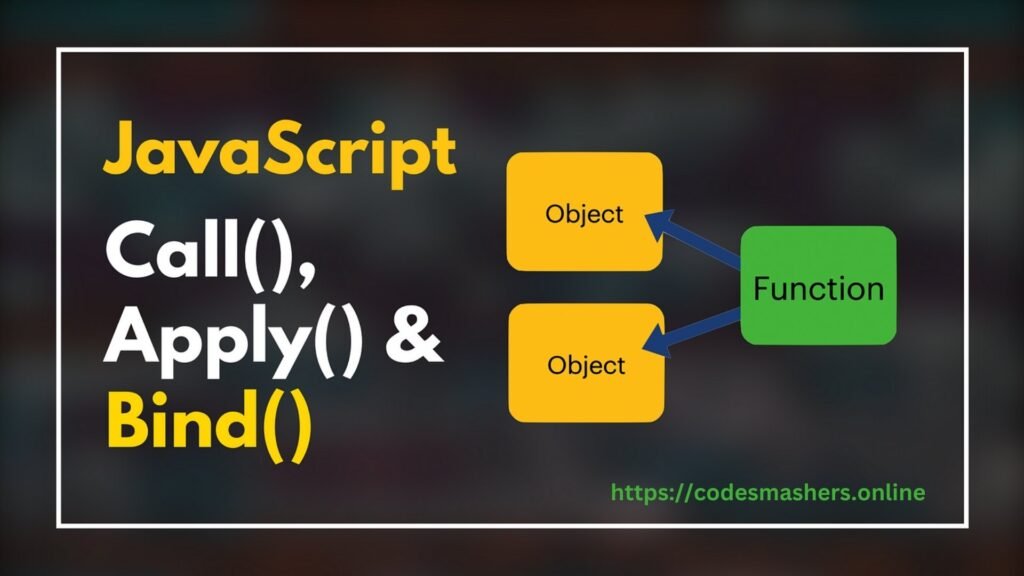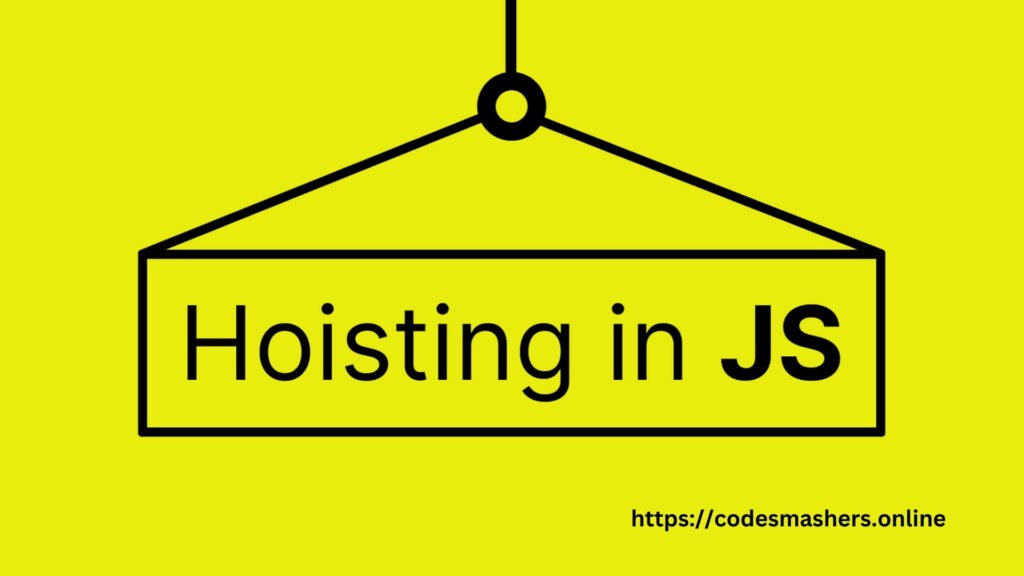Navigating the intricate world of JS JavaScript functions can feel like exploring an enchanted forest, filled with fascinating yet complex elements. To help you on this quest, we’ll focus on three advanced JS JavaScript function wizardry topics—closures, the `this` keyword, and hoisting. Whether you’re a seasoned developer or a tech enthusiast, mastering these concepts is essential for writing robust, efficient code. Get ready to deepen your understanding and elevate your JS JavaScript skills.
Introduction to Advanced JS JavaScript Functions
JS JavaScript functions are at the core of web development, but grasping their advanced features can be a game-changer. This article will guide you through closures, the `this` keyword, and hoisting—three powerful concepts that can transform your coding prowess.

Overview of Closures, `this`, and Hoisting
Closures allow functions to retain access to their lexical scope even when executed outside of it. The `this` keyword represents the context in which a function is executed, and hoisting automatically moves declarations to the top of their scope. Understanding these will streamline your coding process in JS Javascript.
Importance in Modern JS JavaScript Development
Mastering these advanced functions isn’t just about theoretical knowledge; it’s about applying them practically to solve real-world problems. In modern development, these skills help you write cleaner, more efficient, and bug-free code.
Understanding Closures
Closures are one of JS JavaScript’s most powerful features. They enable functions to remember their surrounding scope.
What Are Closures?
A closure is created when a function preserves its lexical scope, allowing it to access variables from its parent scope even after the parent function has finished executing. This enables encapsulation and data privacy.
How Closures Capture Lexical Scope
Closures capture variables in their surrounding scope through lexical scoping. This means variables are bound to the location where they are defined, not where they are executed. This subtlety unlocks many useful applications in programming.
Lexical Scope and Closures
To understand closures, you first need to grasp the lexical scope.
Definition and Characteristics of Lexical Scope
Lexical scope refers to the visibility of variables within different parts of your code. In JS JavaScript, a variable’s scope is determined by its location within the source code, and nested functions have access to variables declared in their outer scope.
How Lexical Scope Affects Closures
Lexical scope impacts how closures work by defining which variables are accessible. When you create a closure, it retains access to its lexical scope, providing a powerful way to manage state and behavior.

Practical Examples of Closures
Closures aren’t just theoretical; they have practical applications that can simplify your code.
Using Closures to Create Private Variables
One common use of closures is to create private variables. By defining variables within a function scope and returning inner functions, you can keep data private while exposing specific methods.
Implementing Function Factories with Closures
Function factories leverage closures to generate customized functions. These factories can create functions with predefined parameters, making your code more modular and reusable.
Closures and Memory Management
While closures are powerful, they can also impact memory usage.
How Closures Impact Memory Usage
Closures can increase memory consumption as they retain references to their lexical scope. This can be particularly problematic in long-running applications.
Techniques for Efficient Closure Management
To manage memory efficiently, avoid unnecessary closures and clean up references when no longer needed. Tools like Chrome’s Memory Profiler can help identify memory leaks related to closures.
Introduction to the `this` Keyword
The `this` keyword in JS JavaScript is versatile but can be confusing due to its dynamic nature.
What Does `this` Represent?
The value of `this` depends on how a function is called. It can represent different objects in different contexts, making it crucial to understand its behavior.
Understanding `this` in Different Contexts
In the global context, `this` refers to the global object. Inside a function, it can vary based on how the function is invoked—directly, as a method, or with `.call()`, `.apply()`, or `.bind()`.
`this` in Global and Function Contexts
The context in which `this` is used determines its value.
How `this` Works in Global Scope
In the global scope, `this` refers to the global object (`window` in browsers). This can lead to unexpected behaviors, especially in strict mode, where `this` is `undefined`.
`this` in Regular and Arrow Functions
Regular functions and arrow functions handle `this` differently. Regular functions define `this` at runtime, whereas arrow functions inherit `this` from their lexical scope.
`this` in Object Methods
When used within object methods, `this` points to the object itself.
Using `this` Within Object Methods
In object methods, `this` refers to the object the method is called on. This allows methods to access and manipulate object properties.
Common Pitfalls and Best Practices
Pitfalls include losing `this` context in nested functions. Use arrow functions or `.bind()` to ensure `this` maintains the correct context.
`this` and Event Handlers
Event handlers often need special handling of `this`.
How `this` Behaves in Event Handlers
In event handlers, `this` refers to the element that triggered the event. This can be tricky when you need to access properties of a different object.
Using `.bind()` to Control `this`
The `.bind()` method creates a new function with a fixed `this` value. This is particularly useful in event handlers to maintain the correct context.

Advanced `this` Binding Techniques
Mastering `this` binding techniques enhances your JS JavaScript expertise.
Using `.call()`, `.apply()`, and `.bind()`
These methods allow explicit setting of `this`. `.call()` and `.apply()` invoke functions with a specified `this`, while `.bind()` returns a new function with a fixed `this`.
Practical Examples and Use Cases
Use cases include borrowing methods from other objects and fixing `this` in callback functions, enhancing code flexibility and reuse.
Understanding Function Execution Context
Understanding the execution context is key to grasping `this`.
What Is Execution Context?
Execution context is an environment where the JS JavaScript code is evaluated and executed. Each context has a `this` value, variable objects, and scope chains.
How Execution Context Affects Function Execution
Different execution contexts affect how `this` and variables are resolved. Recognizing these contexts helps avoid unexpected behaviors.
Function Execution Context and `this`
The execution context plays a vital role in determining `this`.
How `this` Is Determined in Different Execution Contexts
`this` is set based on the execution context, whether global, function, or eval context. Understanding these contexts ensures correct `this` usage.
Examples of `this` in Various Execution Contexts
Examples include using `this` in different scopes and how it interacts with closures. Practicing these scenarios solidifies your understanding.
Introduction to Hoisting
Hoisting is another fundamental concept that affects JS JavaScript function behavior.

What Is Hoisting?
Hoisting moves variable and function declarations to the top of their scope. This means you can use functions and variables before declaring them.
Variables and Functions Affected by Hoisting
Both variable and function declarations are hoisted. However, only function declarations are fully hoisted, while variables are hoisted without initialization.
Function Hoisting Explained
Understanding function hoisting helps avoid common bugs.
How Function Declarations Are Hoisted
Function declarations are hoisted to the top of their scope, making them available throughout the code. This allows calling functions before their declaration.
Differences Between Function Declarations and Expressions
Function expressions are not hoisted. Unlike declarations, they are initialized only when the code execution reaches them.
Variable Hoisting and Scope
Variable hoisting behaves differently from function hoisting.
Hoisting Behavior of Variables
Variables declared with `var` are hoisted but not initialized. This can lead to undefined values if accessed before assignment.
Impact on Variable Scope and Initialization
Hoisting affects variable scope, making it crucial to declare variables at the beginning of their scope to avoid confusion.
Practical Examples of Hoisting
Real-world examples illustrate the effects of hoisting.
Common Scenarios Where Hoisting Matters
Hoisting can lead to bugs when variables are used before they are initialized. Understanding common scenarios helps prevent these issues.
Best Practices to Avoid Hoisting Issues
Declare all variables and functions at the beginning of their scope. Using `let` and `const` instead of `var` also helps mitigate hoisting problems.
Closures vs. Hoisting
Closures and hoisting interact in unique ways.
How Closures and Hoisting Interact
Closures can capture hoisted variables, leading to unexpected behaviors. Understanding their interaction helps write more predictable code.
Avoiding Common Mistakes Related to Both
Awareness of how hoisting affects closures prevents common mistakes. Always initialize variables before using them within closures.
Debugging Closures, `this`, and Hoisting Issues
Effective debugging techniques are essential for resolving advanced function issues.
Techniques for Identifying and Fixing Errors
Using tools like console logs and breakpoints helps identify issues with closures, `this`, and hoisting. Analyzing call stacks provides insights into function execution.
Tools and Strategies for Effective Debugging
Tools like Chrome DevTools and Visual Studio Code’s debugger make debugging easier. Strategies include isolating problematic code and testing with different values.
The Relationship Between Closures and Hoisting
Closures and hoisting are core JS JavaScript concepts that often interact in ways that can be either beneficial or problematic, depending on the programmer’s understanding. Hoisting elevates variable and function declarations to the top of their scope, which can lead to unexpected results if not carefully managed, especially when combined with closures. Closures occur when a function remembers its lexical scope, allowing access to variables from outer functions even after those functions have been completed.
This can lead to scenarios where hoisted variables within a closure are captured before they are initialized, resulting in closures that reference `undefined` values or stale data. Understanding how hoisting affects variable scopes exploited by closures is crucial to avoiding common pitfalls, such as using variables that haven’t been properly initialized or encountering unintended side effects from shared scope. By being mindful of hoisting and explicitly initializing variables before they’re used in closures, developers can leverage these interactions to write efficient and predictable code.
Performance Considerations for Advanced Functions
Advanced functions can impact performance, making optimization crucial.
Impact of Closures, `this`, and Hoisting on Performance
Closures can increase memory usage, while `this` and hoisting affect execution speed. Understanding these impacts helps write efficient code.
Optimizing Function Performance in JS JavaScript
Optimizing involves minimizing closures, using `this` judiciously, and avoiding excessive hoisting. Profiling tools help identify performance bottlenecks.
Future Trends and Evolving Concepts
The landscape of JS JavaScript functions is evolving, with new patterns emerging.
Emerging Patterns and Concepts Related to Closures, `this`, and Hoisting
New patterns include ES6 features like arrow functions and modules, which simplify function handling. Keeping up with trends ensures your skills remain relevant.
Predictions for the Evolution of Advanced Function Handling
Future trends point towards a more intuitive handling of functions, further simplifying JS JavaScript development. Staying informed helps adapt to these changes.
Mastering closures, the `this` keyword, and hoisting equip you with the knowledge to tackle complex JS JavaScript challenges. These advanced functions are not just theoretical concepts but practical tools that enhance your coding efficiency and effectiveness. By understanding and applying these concepts, you position yourself as a proficient developer capable of creating robust, high-performance applications.
Ready to sharpen your skills further? Explore our advanced JS JavaScript courses and resources to continue your learning journey.
